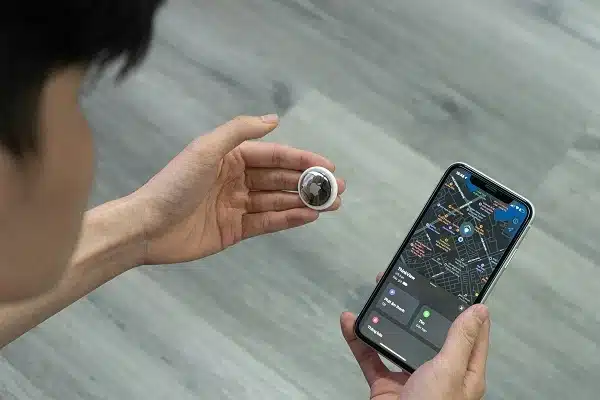Losing a pet is every owner’s worst nightmare. In 2025, technology offers multiple tools to prevent this, but confusion remains: should you choose a GPS dog tracker chip or microchip your dog? This guide explores both options and introduces the P5 Pet GPS Tracker as a modern solution for concerned pet parents. If you’re searching for how to track a dog with a chip or wondering whether dog chips with trackers exist, you’re in the right place.
1. What Is a Microchip for Dogs?
A dog microchip is a small RFID device, about the size of a grain of rice, implanted under your pet’s skin, typically between the shoulder blades. It serves as a permanent ID.
- How it works: When scanned with a chip scanner for pets, the chip transmits a unique code linked to your contact information in a national pet registry.
- Use case: It helps shelters and vets identify lost pets and reunite them with their owners.
- Limitations:
- Not a tracking chip for dogs—it provides no real-time location.
- Depends on someone finding your pet and scanning it.
Still asking “can a microchip track my dog in real time?” — The answer is no. A microchip is not a GPS tracking device.
2. What Is a GPS Pet Tracker (like SEEWORLD P5)?
The Pet GPS Tracker is a collar-mounted device that uses GPS, cellular, and Bluetooth technology to help you monitor your pet in real-time.
- Key features:
- Live tracking and route history
- Virtual safe zones with instant alerts
- Health tracking (sleep, steps, activity)
- Compact and waterproof design
- Industry-leading 15-day battery life — perfect for extended outdoor use or vacations
Unlike microchipping pets, the P5 gives you active control by tracking a dog with GPS wherever they go.
Up to 15-day Ultra-long Standby – P5 Pet GPS Tracker
3. Microchip vs. GPS Tracker: Side-by-Side Comparison
| Feature | Microchip | P5 GPS Tracker |
|---|---|---|
| Type | RFID Identification | GPS + Cellular Tracking |
| Real-time Location | ❌ Not Available | ✅ Yes, via app |
| Battery Required | ✅ None | ❌ Needs charging every few days |
| Battery Life | N/A | ✅ Up to 15 days |
| Cost | $25–50 (one-time implant) | $50–150 + optional monthly service |
| Tracking Range | N/A | Unlimited (within cellular coverage) |
| Implanted or Wearable? | Implanted under the skin | Wearable collar device |
| Legal ID Proof | ✅ Accepted | ❌ Not a legal ID |
If you’re looking for chips for dogs with GPS, remember: they are external devices, not implantable tech.
4. When Should You Use a GPS Tracker or a Microchip?
Choose a Microchip when:
- You want a permanent ID that works even if your dog loses its collar.
- You live in an area where shelters and vets have scanners.
- You’re concerned about legal ownership disputes.
Choose a GPS Tracker (like P5) when:
- You want real-time tracking for outdoor adventures, hikes, or road trips.
- You need insights into your pet’s health and activity.
- You want to be alerted the moment your dog leaves a safe zone.
- You value long battery life that minimizes charging interruptions.
Best Option in 2025: Use both. Microchipping dogs offers a fallback safety net, while GPS devices like the P5 actively prevent pets from getting lost.
5. How Does the P5 Compare to Other Pet GPS Trackers?
While there are many GPS tracking devices on the market, not all are created equal. Here’s how the P5 stacks up against typical industry offerings:
| Feature | P5 GPS Tracker | Other GPS Trackers (Brand X, etc.) |
| Battery Life | ✅ Up to 15 days (market-leading) | ❌ 2–7 days on average |
| Charging Frequency | Once every 2 weeks | Every 2–3 days |
| Waterproof & Durable | ✅ Fully waterproof, rugged | Varies by brand |
| Location Precision | ✅ High accuracy + history log | Often less accurate |
| Health Monitoring | ✅ Sleep, steps, and activity tracking | Some lack health tracking features |
| Ease of Use | App-integrated, intuitive interface | Inconsistent or outdated apps |
The P5 stands out by solving common pain points like short battery life and unreliable apps. It’s built for real-world use by active pet owners who want peace of mind, whether at home or on the go.
6. Debunking Common Myths
- “GPS implant chip for dogs exists”: False. No implantable GPS chip is approved for dogs due to size, safety, and power constraints.
- “A dog chip with tracker replaces collars”: False. GPS trackers are external and must be worn.
- “Microchips are outdated”: False. They are still the standard for pet identification.
If you’re still searching for “dog chipping tracking” or “track a dog chip,” know the difference: Microchips = ID. GPS = Tracking.
Conclusion: Why the P5 Tracker Complements Microchipping
Relying on just one solution—whether a dog tracker chip or a pet microchip—isn’t enough. The smartest approach for modern pet parents is to combine microchipping with a GPS solution like the P5.
- Microchip: Secure, long-term identification
- GPS Tracker: Real-time location + health monitoring + 15-day battery
With the P5, tracking a dog becomes proactive rather than reactive.
Want to protect your dog with both ID and real-time location? Explore the P5 Pet GPS Tracker today.



